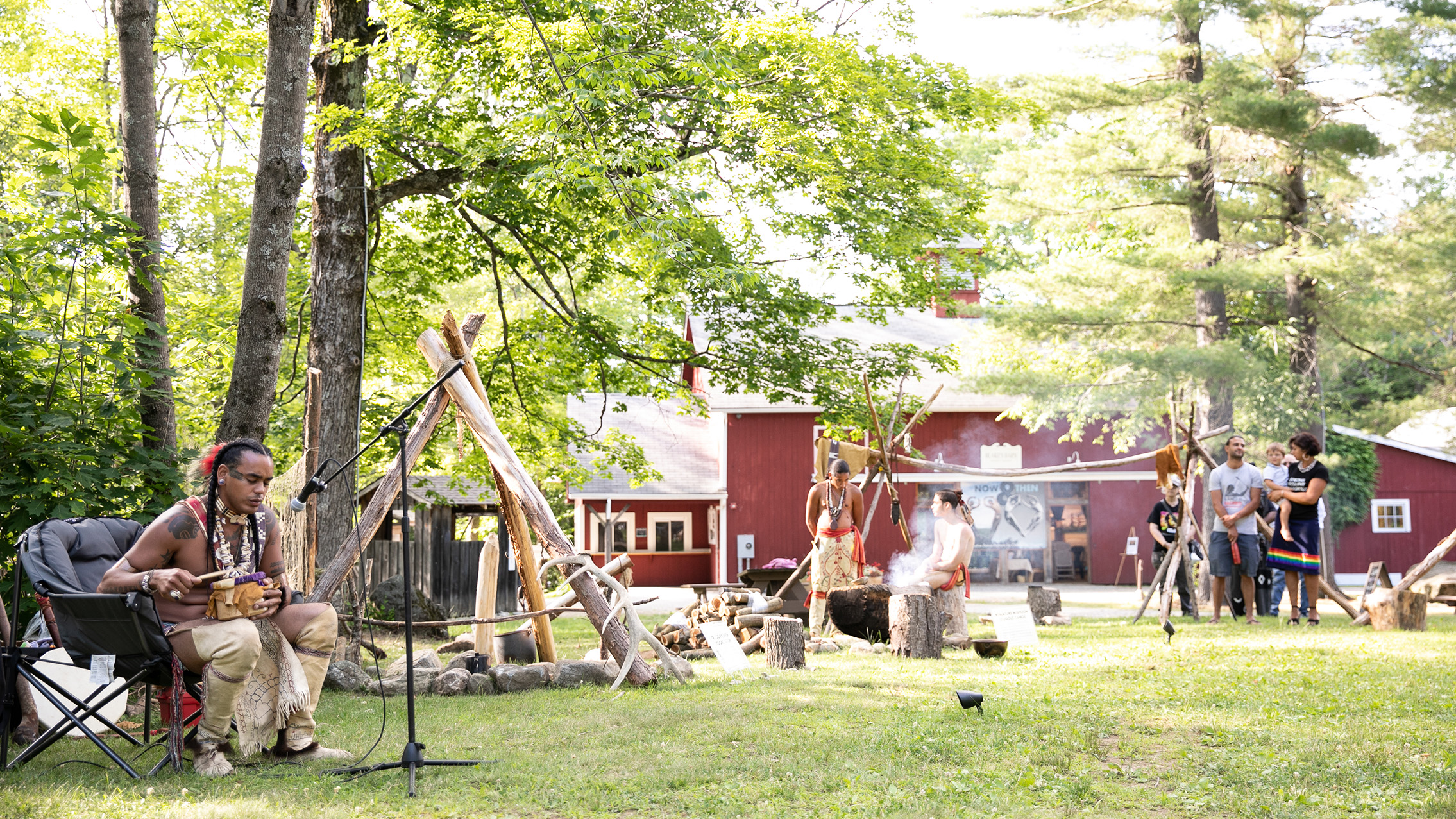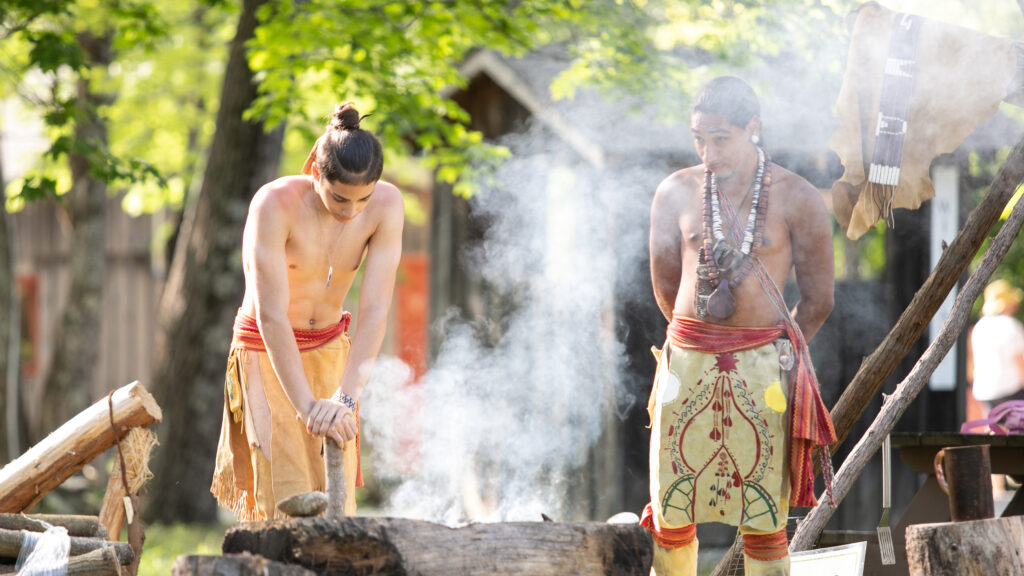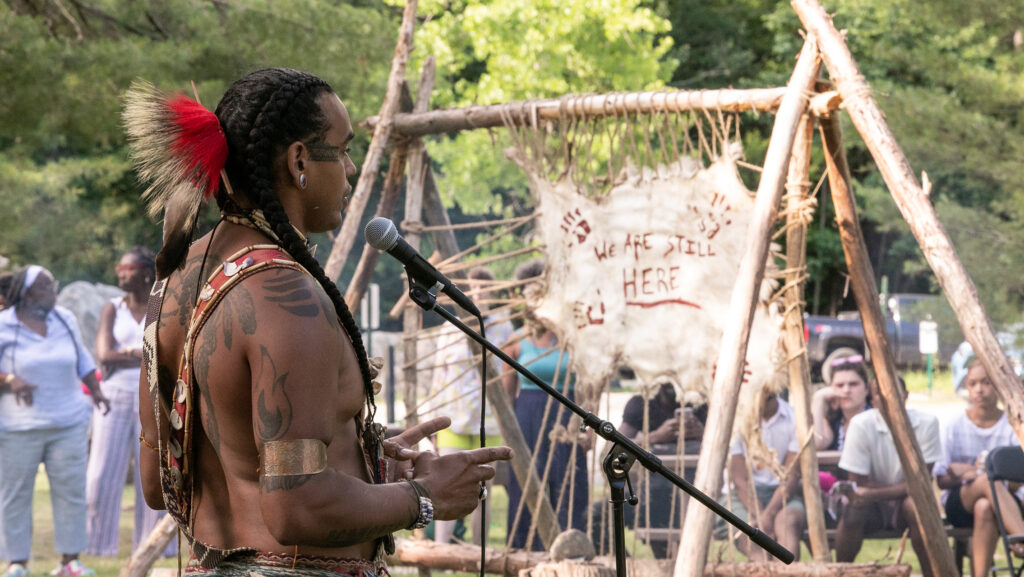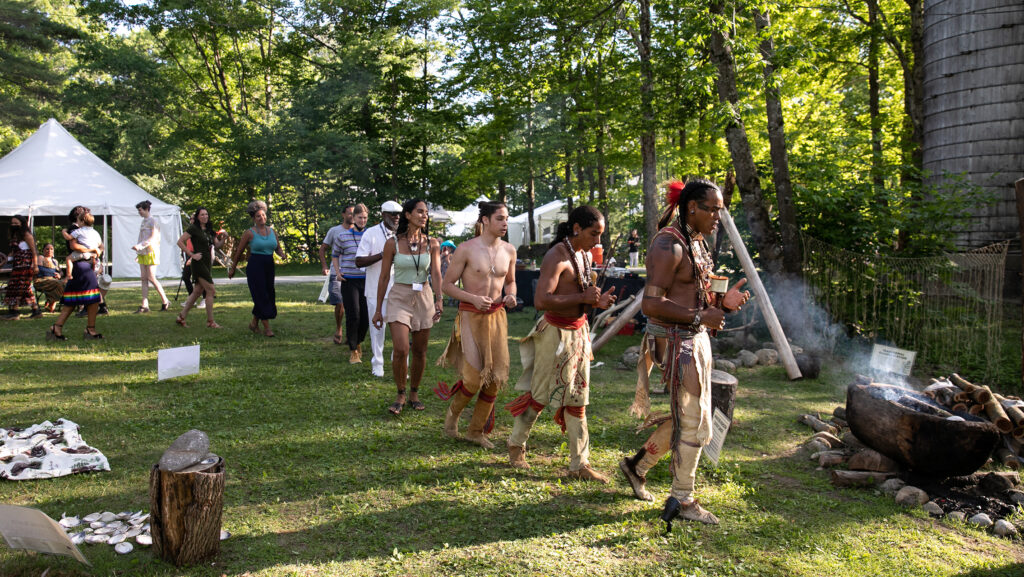
This spring, Nipmuc citizens Andre Strongbearheart Gaines Jr. and Nazario TallHairRedDeer Garate built and installed an Eastern Woodlands homesite on the Jacob’s Pillow campus.
This homesite brought Eastern Woodlands peoples and the public together to highlight urgent issues of access, health, and the sustainability of cedar swamps in the Eastern Woodlands. Crafted from cedar trees harvested from Douglas State Forest, the structures were centered around the hearth, where Gaines led the burning of a miniature mishoon (an example of a dugout canoe) over three days in May 2022.
The homesite included a traditional fishnet station, a tripod and fish cookstation, fleshing and stretching poles used to process deer skin into hides, a deer hide rack, a large double tripod cooksite, and a miniature mishoon. Read more about the tradition of burning a mishoon here.

“Our people have kept a lot, but we’ve lost a lot as well,” says Gaines. “It’s really become our purpose, our mission, to have cultural revitalization and cultural preservation. One of those ways we do that is continuously building sites like this …. doing all these things that we did traditionally, so that these things don’t get lost.”

An Eastern Woodlands homesite would also include a wetu, a traditional round dwelling built and used by Eastern Woodlands Peoples in this region, including Stockbridge-Munsee, Nipmuc, and the Wampanoag. A wetu is constructed of cedar poles, covered with bark, containing a fire. In order to build a wetu, native people must have reliable access to regional cedar swamps for the caretaking and harvesting of wood. However, the majority of New England forest land is now either privately owned or conserved. As a result, native tribal leaders often face legal restrictions in accessing cedar swamps on private land, as well as bureaucratic difficulties accessing cedar swamps on conserved land, despite maintaining the right to do so.
“One of the biggest problems that we have is access,” says Gaines, who has been highlighting and cataloging which cedar swamps in Nipmuc territory are healthy enough to harvest from for the building of traditional homes. Some are overgrown, he says, while others are clear-cut. “You’ve got these parks pretty much gatekeeping what we have harvested for thousands of years. Massachusetts Executive Order No. 126 states quite clearly that we can go in and harvest these things … so it’s really problematic when we get to these places, and they have the pathways chained up after conversations about easier access.”
Gaines hopes the homesite creates a chance for Native and non-Native people to be welcomed when they first step onto this site. “It’s about moving forward in good ways and having conversations, and acknowledging their presence and our presence,” he says. “It all ties together, but somebody’s got to do the work. For us to do the work, it can be difficult, because we live in today’s society … We’re trying to create spaces and do what we have to do to revitalize a culture that’s been fractured for some time now. So we’re looking for allies personally as well, to help do this work. It’s difficult in this time.”

On Sunday, July 10, Gaines led two 30-minute interactive talks where participants were able to witness the making of a fire, the cooking of food, and continued work on the fishnet. Traditional hand games were played, traditional meals were prepared, and old social songs were sung.
Andre Strongbearheart Gaines Jr. is a traditional artist, cultural steward, and Creative Director of NO LOOSE BRAIDS. He is currently an artist in residence at Ohketeau Cultural Center in Ashfield, MA. Visit his website here and learn more about Nipmuc history here.
Edited by Gillian Ebersole. Published August 2022.